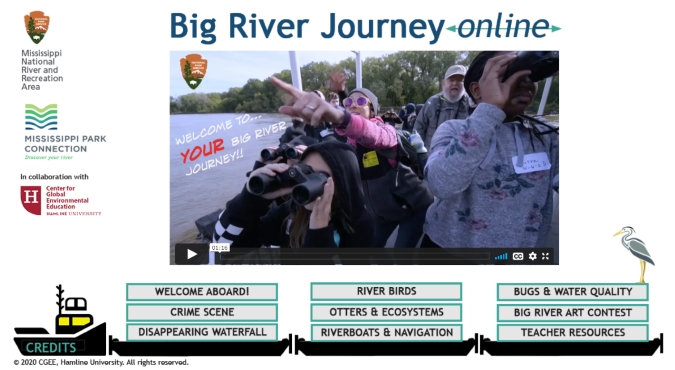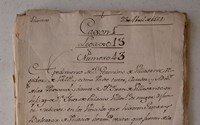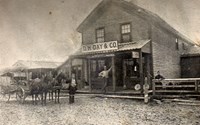- Lesson Plan (15)
- Distance Learning (13)
- Field Trips (9)
- Student Activities (3)
- Guest Speakers (2)
- Field Schools & Institutes (1)
- Primary Sources (1)
- Mississippi National River & Recreation Area (5)
- Tumacácori National Historical Park (5)
- Gateway Arch National Park (4)
- Natchez Trace Parkway (4)
- Sleeping Bear Dunes National Lakeshore (4)
- Rocky Mountain National Park (2)
- Salinas Pueblo Missions National Monument (2)
- Acadia National Park (1)
- Bryce Canyon National Park (1)
- Show More ...
- Social Studies (32)
- Science (15)
- Literacy and Language Arts (8)
- Math (1)
- 6-8.RH.2 (5)
- 6-8.RH.7 (5)
- 6-8.RH.3 (4)
- 6-8.RH.4 (4)
- 9-10.RH.1 (4)
- 9-10.RH.10 (4)
- 9-10.RH.4 (4)
- 9-10.RH.6 (4)
- 9-10.RH.7 (4)
- Show More ...
Showing 42 results for missions ...
Investigate Mission 2000 Records
- Type: Primary Sources ... Student Activities
- Grade Levels: Middle School: Sixth Grade through Eighth Grade
Salinas Pueblo Missions Astronomy Program
- Type: Lesson Plan
- Grade Levels: Middle School: Sixth Grade through Eighth Grade
Pre-Planning Night Sky Trip Unit
- Type: Lesson Plan
- Grade Levels: Middle School: Sixth Grade through Eighth Grade

Most Americans know the clarion call "Remember the Alamo!" and have a hazy recollection that the "fort" originally had been built as a Spanish mission. What is less well known outside the Southwest is that the Mission San Antonio de Valero–the Alamo–was only one of a chain of missions along the San Antonio River. Established between 1718 and 1731, these missions were built not only to spread the faith of the conquistadors, but also to serve multiple foreign policy objectives for the Spanish.
Primarily Me: Primary Sources from Whitman Mission
- Type: Lesson Plan
- Grade Levels: Upper Elementary: Third Grade through Fifth Grade
Mississippi River Vocabulary
- Type: Lesson Plan
- Grade Levels: Upper Elementary: Third Grade through Fifth Grade
Introductory materials to set the foundation for learning about rivers and how people have interacted with them over time. This lesson is self-contained and does not require additional material. This lesson is designed as preparation for the Settling the Mississippi unit so familiarity with later lessons may help educators steer this lesson toward uniform terms and repeatable examples throughout the unit.
Out of the Depths and into the Park: Geology of the Mississippi River Valley
- Type: Distance Learning ... Field Trips
- Grade Levels: Middle School: Sixth Grade through Eighth Grade
A Soldier's Notes From Michigan's Big Battle
- Type: Lesson Plan
- Grade Levels: Middle School: Sixth Grade through Eighth Grade

Territory during the War of 1812 in Monroe, MI. This lesson will explore maps and primary sources to understand the significance of the battlefields. By the end of the lesson, students will be able to answer the question: Why should River Raisin and other War of 1812 battlefields be preserved and protected?
Tumacácori in Five Senses - PreK -1
National Park Service 101
- Type: Lesson Plan
- Grade Levels: Upper Elementary: Third Grade through Fifth Grade
Life at Tumacácori
- Type: Field Trips
- Grade Levels: Upper Elementary: Third Grade through Fifth Grade

Students will investigate how mission life differed from traditional O’odham village life. Did mission children go to school? What did they eat? How does construction of a traditional O’odham home compare to a mission church built from mud? Learn why, when, where and how, as you tour the park’s orchard, garden, and church with a ranger. Students will practice using a traditional mano and metate and learn how to “mud” an O’odham home.
Glen Haven Post-visit Activity
- Type: Student Activities
- Grade Levels: Upper Elementary: Third Grade through Fifth Grade
The Arrowhead: Emblem of the National Park Service
Glen Haven Pre-visit Activity
- Type: Student Activities
- Grade Levels: Upper Elementary: Third Grade through Fifth Grade
Big River Journey
- Type: Field Trips
- Grade Levels: Upper Elementary: Third Grade through Fifth Grade
Gran Quivira: A Blending of Cultures in a Pueblo Indian Village
- Type: Lesson Plan
- Grade Levels: Middle School: Sixth Grade through Eighth Grade
Schoodic Education and Research Center (SERC)
- Type: Field Schools & Institutes
- Grade Levels: Upper Elementary: Third Grade through Fifth Grade

SERC’s education mission is to make natural and cultural resource research and data more accessible to students of all ages through placed based and STEM activities. SERC is the Research Learning Center representing studies throughout 14 national park sites in the Northeast and along the Appalachian Trail.
The Blame Game - Pima (O'odham) Rebellion of 1751
- Type: Lesson Plan
- Grade Levels: High School: Ninth Grade through Twelfth Grade

“What caused the Upper Pima (O’odham) Rebellion?” Students will encounter various answers to the essential question through the close reading and study of several primary and secondary sources. Students will have the opportunity to understand the impact of the Spanish mission system on native peoples and to investigate some of the causes of the rebellion.
Every Kid Outdoors
- Type: Guest Speakers
- Grade Levels: Upper Elementary: Third Grade through Fifth Grade

Students will learn the National Park Service mission while getting an overview of Cedar Creek & Belle Grove NHP. They will understand the different types of parks within NPS and how many are within a close distance of where they live. They will learn about the different types of jobs park rangers do.
Big River Journey Online
- Type: Distance Learning
- Grade Levels: Upper Elementary: Third Grade through Fifth Grade

Big River Journey Online is the next best thing to a riverboat field trip on the Mississippi River itself! Filled with fun and exciting video clips and interactive learning modules about birds, boats, bugs, water quality and much more, Big River Journey Online allows kids to explore the mysteries of the Mississippi from school or home.
What is a National Park?
- Type: Lesson Plan
- Grade Levels: Middle School: Sixth Grade through Eighth Grade

Students will analyze the arrowhead logo as an introduction to the National Park Service, an agency whose mission is to protect and preserve natural and cultural resources for future generations and provide visitors with opportunities for recreation and learning. Students learn how the design of the National Park Service arrowhead is made up of symbols, and then have a chance to create their own design specific to Hawai‘i.










